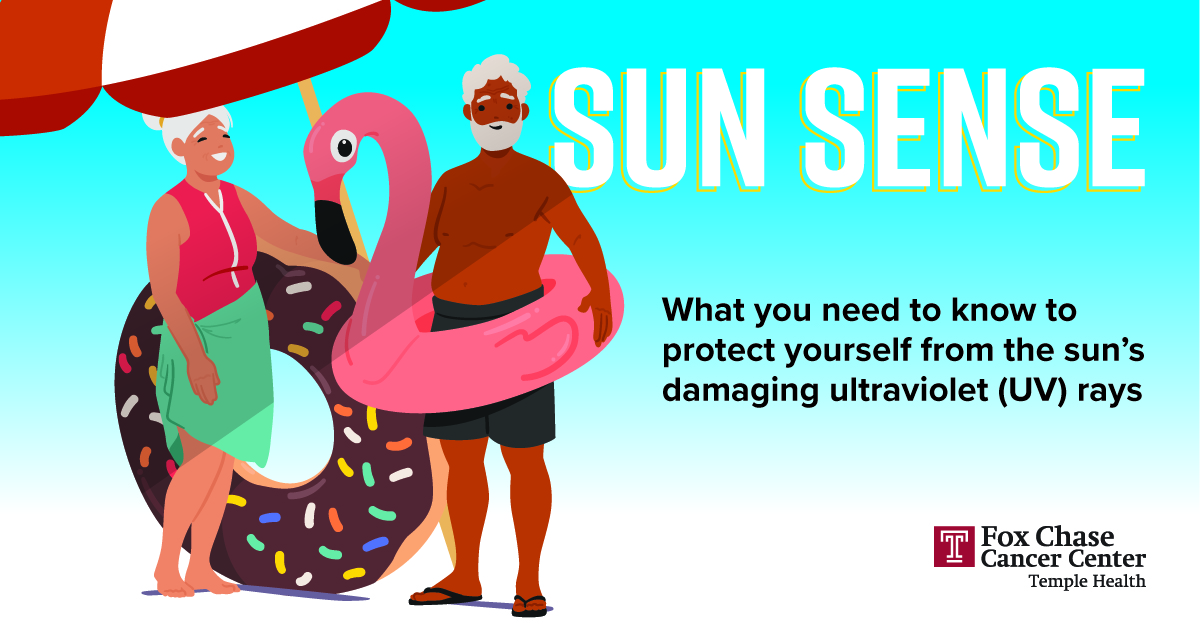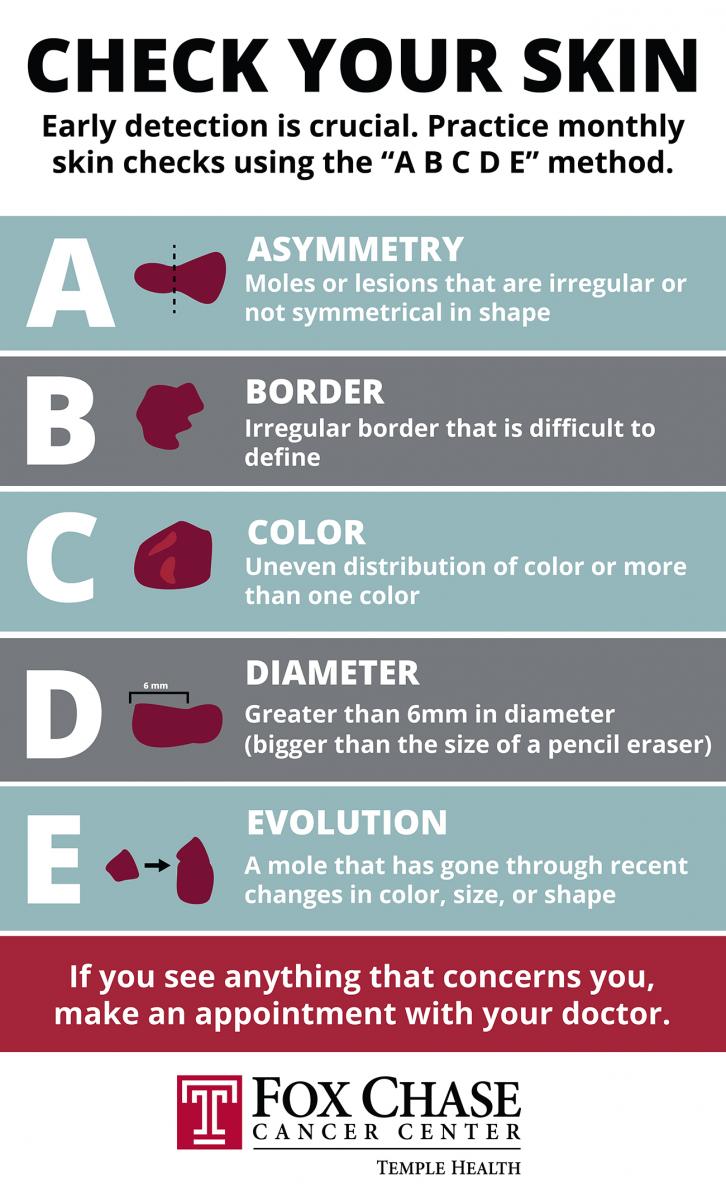
Step into Summer with these Sun Protection Tips
-
Updated July 15, 2021
Everybody loves the outdoors in the spring and summer. After a long winter of dark mornings and early dusk, people crave sunlight! With the sun comes the responsibility of protecting your largest organ – the skin– from the sun’s damaging rays.
During these brighter months, it’s the perfect time to talk about what you can do to take precautions and stay on top of your skin’s health. According to the American Cancer Society (ACS), skin cancer is one of the most common type of cancers in the U.S. And, as is the case with any type of cancer, treating it early and doing everything you can to prevent it is incredibly important.
Types of skin cancer
There are three main types of skin cancer. Basal cell and squamous cell skin cancers are most often found in areas exposed to the sun, such as the head, neck, and arms. These types of cancer can also occur elsewhere and are very common, and usually very treatable. Melanoma is less common than some other skin cancers but more likely to grow and spread. According to the ACS, melanoma accounts for approximately 1 percent of skin cancers, but causes the majority of skin cancer related deaths. Over the last few decades, the rates of melanoma have been increasing.
“Catching skin cancer early is key. When detected early, most skin cancers can be treated effectively and are often curable,” said Jeffrey M. Farma, MD, FACS, a surgical oncologist at Fox Chase Cancer Center. “When you know your own skin markings—moles, freckles and blemishes—you’re likely to notice changes that occur. In addition to checking your own skin regularly, have your skin checked yearly by your primary doctor or dermatologist for signs of skin cancer.”
The ABCDE Rule of Skin Cancer

"If a mole or marking has gone through recent changes in color and/or size, contact your doctor as soon as possible,” Farma said. “Skin cancer affects people of all skin tones, despite complexion and can occur anywhere on the body.”
Skin Cancer Prevention
The most preventable cause of skin cancer is exposure to ultraviolet (UV) light; however, it isn’t necessary to totally avoid the sun. Below are steps you can take to limit your exposure:
- Seek shade, especially when the sun is strongest, between 10 am and 4 pm. The shadow test can help determine the strength of the sun’s rays: if your shadow is shorter than you, then rays are strongest. Another useful number to note is that of the UV Index. It will let you know how strong the sun’s rays will be on any given day.
- Cover up with clothing as much as possible. If light can shine through your clothing, then UV rays can penetrate as well. In general, dark colors provide better protection than light ones. Remember to wear UV-blocking sunglasses for eye protection and a wide-brimmed hat to protect your scalp, face, and ears.
- Use a broad spectrum (UVA/UVB) sunscreen with an SPF of 30 or higher on unprotected skin, paying close attention to the face, ears, neck, arms, and any other areas not covered by clothing. Use lip balm with sunscreen on your lips. Be aware that sunscreen does not block all UV rays and needs to be reapplied at least every two hours to maintain protection. Sunscreen is just as important on hazy or overcast days.
- Avoid tanning beds, booths, and sunlamps. Studies have shown that exposure to UV radiation damages your skin, whether the exposure comes from tanning beds or natural sunlight. There is no such thing as safe tanning.
Risk Factors for skin cancer
The most common risk factor for skin cancer is also the most preventable one: exposure to natural and artificial UV light. Do not tan or burn and avoid tanning salons.
Unfortunately, some risk factors (such as fair skin that burns easily, red/blonde hair, freckles, or a family history of melanoma) cannot be controlled.
In addition, those with a personal history of melanoma are at a greater risk for having another melanoma diagnosed.
Diligence is key in both modifiable and non-modifiable risk factors. Take precautions to avoid and lessen sun exposure. If you notice changes in your skin – any at all – it is best to have them checked out by your physician or dermatologist.
For more information on skin cancer and the Fox Chase Cancer Center Melanoma and Skin Cancer Program, please call 1-888-FOX CHASE.
